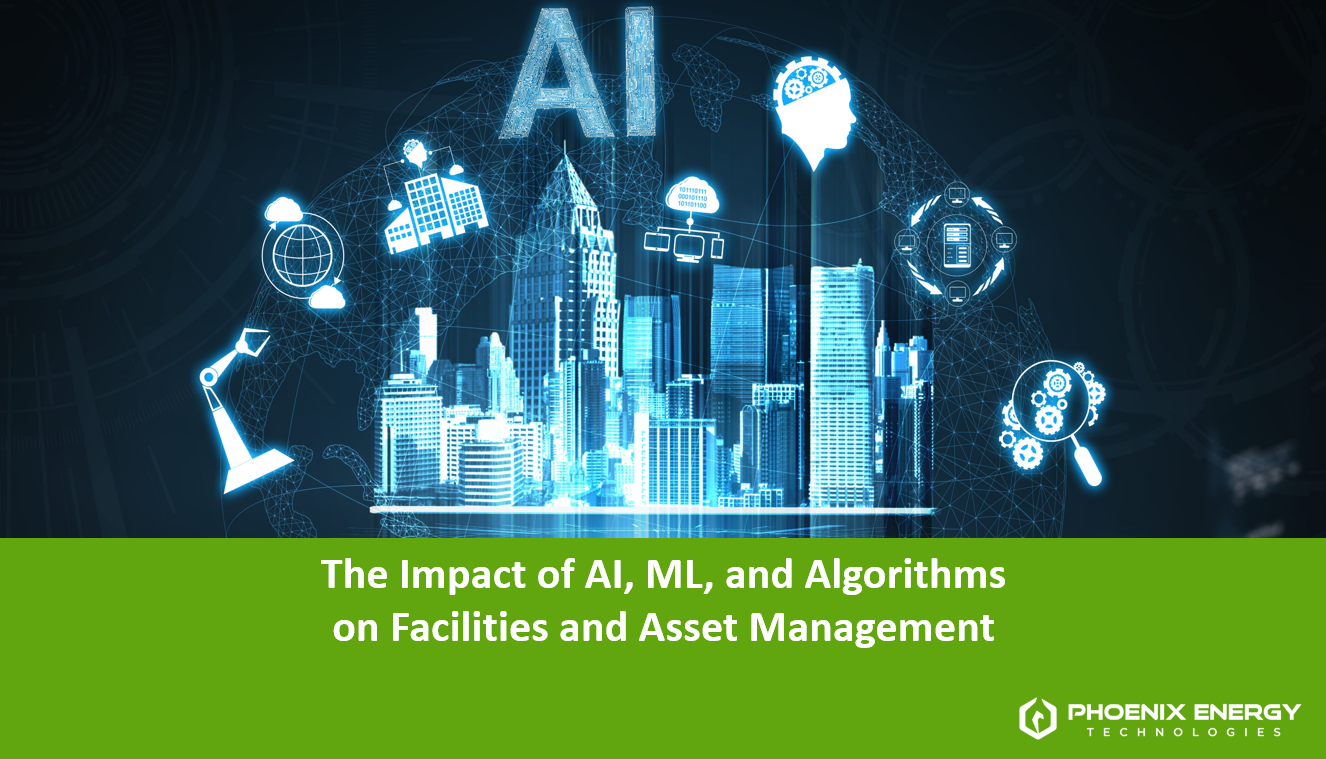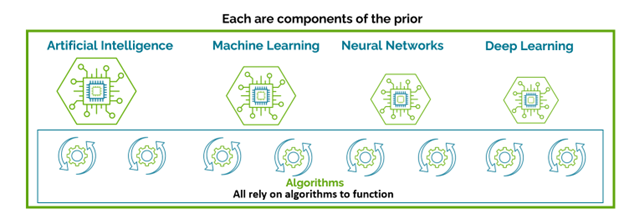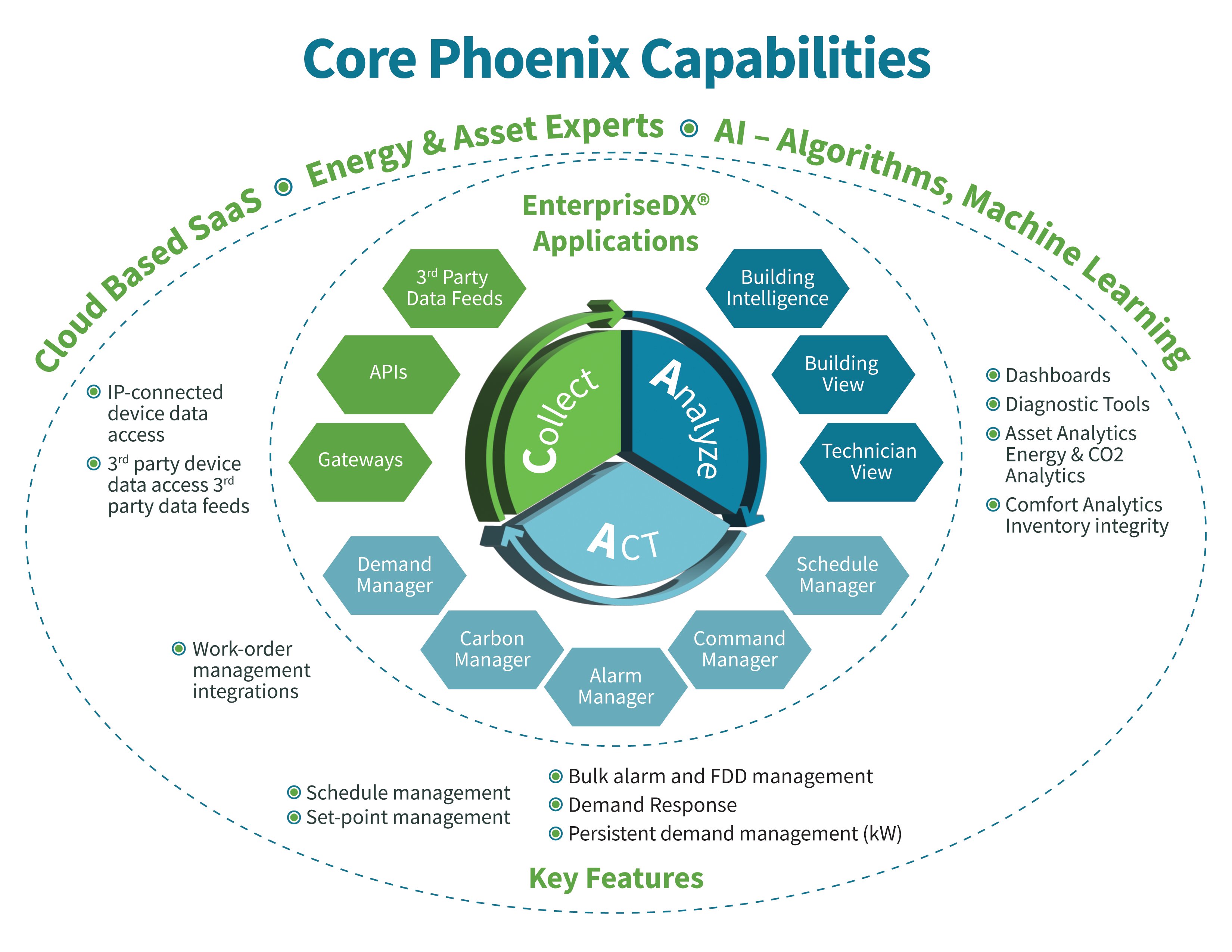Share this
The Impact of AI, ML, and Algorithms on Facilities and Asset Management
by Ashish Khandelwal on Jul 6, 2023

In today's rapidly evolving technological landscape, the terms "AI," "ML," and "algorithms" have become increasingly common. The hype surrounding these concepts is not without reason, as experts predict that AI could substantially boost profitability rates by 38 percent and contribute over $14 trillion to the economy by 2035. But what sets AI and ML apart from traditional software? How do they specifically benefit facilities and asset management? In this blog post, we will delve into these questions and shed light on the profound implications of these technologies.
To embark on this exploration, let us first establish a clear understanding of these fundamental terms.
Algorithms: Algorithms are the foundation of computer science. They are fundamental to different areas of computer science such as databases, security, AI, and graphics. An algorithm is a step-by-step procedure or a set of rules for solving a specific problem. Traditionally, algorithms are coded to solve a specific problem. As new problems are encountered new code is written and deployed to solve those problems.
Artificial intelligence (AI): AI is a broad field of computer science that focuses on creating machines capable of simulating human intelligence. AI encompasses a wide range of techniques, algorithms, and approaches that enable machines to perform tasks, such as problem-solving, decision-making, and natural language processing.
So how does AI achieve all of this? AI is a group of algorithms that can modify its behavior and create new algorithms in response to learned inputs and data. The very essence of AI is the idea of “pattern recognition”. AI algorithms can process large amounts of data, recognize patterns in the data and learn from it. The learning is then applied to make decisions and predictions when similar patterns are encountered in the future. This ability to change, adapt and grow based on new data, is described as “intelligence”. As it processes more and more data, the system incrementally improves itself.
Artificial Intelligence is an umbrella term that has a number of sub-disciplines: Machine Learning, Neural Networks, Deep Learning, Natural Language Processing, Computer Vision. Different algorithms are designed for different purposes. For example, decision trees are algorithms commonly used in classification tasks, where the goal is to assign an input to a specific category or class. Support Vector Machines (SVM) are another type of algorithm used for both classification and regression tasks, which involve predicting a continuous value. Neural networks, particularly deep learning models, are highly versatile algorithms capable of handling complex patterns and relationships in data.

Machine Learning (ML): Machine Learning is a subset of AI. ML algorithms have to be fed with structured data as opposed to general AI that can handle unstructured data. An example of ML is credit card fraud detection system that uses structured data from banking systems. An example of extremely capable AI would be a robot that can navigate the world with unforeseen obstacles.
At its core, ML relies on the ability to recognize patterns and extract insights from data. It uses statistical techniques to train models on large datasets and then applies these models to make predictions or take actions on new, unseen data. ML algorithms can be broadly classified into three types: supervised learning, unsupervised learning, and reinforcement learning.
Supervised learning involves training a model on labeled data, where the desired output or outcome is known. The model learns to associate input data with the correct output, enabling it to make predictions on new, unseen data. Unsupervised learning, on the other hand, deals with unlabeled data and aims to discover patterns or structures within the data. Reinforcement learning involves training an agent to interact with an environment and learn through a system of rewards and punishments.
Now that we have a clearer understanding of AI, ML, and algorithms, let’s explore their relevance to asset and facilities management.
Asset and facilities management is a critical function for businesses, organizations, and even cities. It involves the management, operation, and maintenance of physical assets, such as buildings, equipment, and infrastructure, to ensure their optimal performance, longevity, and cost-effectiveness.
Traditionally, asset and facilities management relied on manual processes and periodic inspections to identify maintenance needs, detect anomalies, and optimize performance. However, the advent of AI and ML has revolutionized this field by introducing data-driven, predictive, and proactive approaches.
AI and ML techniques can leverage data collected from sensors, IoT devices, and other sources to provide real-time insights into the condition, performance, and energy usage of assets and facilities. By analyzing this data using ML algorithms, patterns, trends, and anomalies can be identified, enabling predictive maintenance, energy optimization, and improved decision-making.
More specifically, Phoenix Energy Technologies has been providing smart building IoT analytics solutions to customers, leveraging our proprietary CAA closed loop framework (collect-analyze-act), for more than 15 years. AI, quite simply, allows us to augment our existing core closed-loop capabilities to be better, faster, more dynamic, and advance towards an autonomous and adaptive closed-loop system.

For example, ML algorithms can learn from historical data to predict equipment failures or maintenance requirements before they occur. By identifying early warning signs or patterns indicative of impending issues, asset managers can schedule proactive maintenance, avoiding costly breakdowns and maximizing uptime.
AI-powered analytics can also optimize energy consumption by analyzing real-time data from sensors and smart meters. ML algorithms can learn patterns of energy usage and identify opportunities for energy savings, such as optimizing HVAC systems, adjusting lighting schedules, or identifying energy-intensive equipment. By leveraging these insights, businesses can reduce energy costs, improve sustainability, and meet environmental targets.
Moreover, AI can facilitate more informed decision-making in asset and facilities management. By processing vast amounts of data and simulating different scenarios, AI systems can provide recommendations for optimizing asset utilization, space management, or long-term planning. This enables stakeholders to make data-driven decisions that maximize efficiency, reduce costs, and enhance occupant comfort.
As AI and ML continue to advance, we can expect further developments in autonomous and adaptive closed-loop systems. These systems will leverage real-time data, AI algorithms, and control mechanisms to continuously monitor, analyze, and optimize asset and facilities performance without human intervention. This promises improved operational efficiency, reduced downtime, and enhanced occupant experiences.
In conclusion, AI, ML, and algorithms are interrelated but distinct concepts within the field of computer science. AI encompasses the broader goal of creating intelligent machines, while ML focuses on algorithms that enable machines to learn from data. Algorithms, in turn, are the mathematical models or techniques used to process data and make predictions or decisions.
In asset and facilities management, AI and ML are revolutionizing traditional approaches by enabling predictive maintenance, energy optimization, and data-driven decision-making. By leveraging real-time data and ML algorithms, businesses can proactively address maintenance needs, optimize energy consumption, and make informed decisions that maximize efficiency and reduce costs.
As companies like Phoenix Energy Technologies continue to leverage AI and ML to enhance our existing closed-loop capabilities, we can expect to see even greater advancements in asset and facilities management, leading us towards more autonomous and adaptive closed-loop systems.
The future of asset and facilities management is undeniably intertwined with AI and ML. Embracing these technologies will not only improve operational efficiency but also pave the way for smarter, more sustainable, and more resilient built environments.
Share this
- Facilities Management (91)
- Energy Management (69)
- Company News (49)
- Smart Buildings (37)
- Retail (36)
- Building Management (24)
- Building Automation Systems (21)
- Sustainability (20)
- Energy Demand Management (19)
- EEI (15)
- Adaptive Energy Management (14)
- Grocery (14)
- demand response (14)
- Artificial Intelligence (12)
- Data Integration and Visibility (10)
- HVAC IQ (9)
- COVID-19 (8)
- Customer Spotlight (8)
- Carbon Management (7)
- Setpoints and Temperatures (7)
- Equipment Maintenance (6)
- Operational Efficiency (6)
- Refrigeration Optimization (6)
- Ask Ron (5)
- Asset Manager (5)
- Finance and Procurement (5)
- IoT and Digital Transformation (5)
- Awards (4)
- Comfort (4)
- Energy & Store Development (4)
- Safety and Compliance (4)
- Demand Charge Management (3)
- Energy Management System (3)
- Lifecycle Asset Management (3)
- Premium Services (3)
- Refrigeration IQ (3)
- Automated Demand Response (2)
- ConnexFM (2)
- Customer Service (2)
- HVAC Vendor Management (2)
- Load Shedding (2)
- Technician View (2)
- AIM Act (1)
- ALD (1)
- Analytics (1)
- Data (1)
- Data Integration and Visualization (1)
- EMS (1)
- Knowledge Center (1)
- OSHA (1)
- asset management (1)
- December 2025 (1)
- November 2025 (1)
- October 2025 (2)
- September 2025 (1)
- August 2025 (3)
- July 2025 (1)
- June 2025 (1)
- May 2025 (2)
- March 2025 (2)
- February 2025 (1)
- January 2025 (2)
- December 2024 (2)
- October 2024 (1)
- September 2024 (1)
- August 2024 (2)
- June 2024 (2)
- April 2024 (2)
- March 2024 (2)
- January 2024 (1)
- December 2023 (1)
- October 2023 (2)
- September 2023 (2)
- August 2023 (2)
- July 2023 (1)
- May 2023 (2)
- April 2023 (2)
- March 2023 (3)
- February 2023 (1)
- January 2023 (1)
- December 2022 (1)
- November 2022 (2)
- October 2022 (2)
- September 2022 (1)
- May 2022 (2)
- April 2022 (1)
- March 2022 (3)
- February 2022 (2)
- January 2022 (4)
- December 2021 (2)
- November 2021 (3)
- October 2021 (1)
- September 2021 (3)
- August 2021 (4)
- July 2021 (1)
- June 2021 (2)
- May 2021 (1)
- January 2021 (2)
- December 2020 (2)
- November 2020 (2)
- October 2020 (3)
- September 2020 (4)
- August 2020 (3)
- July 2020 (2)
- June 2020 (3)
- May 2020 (3)
- April 2020 (5)
- March 2020 (5)
- February 2020 (4)
- January 2020 (4)
- December 2019 (4)
- November 2019 (3)
- October 2019 (4)
- September 2019 (5)
- August 2019 (4)
- July 2019 (4)
- May 2019 (2)
- April 2019 (3)
- February 2019 (1)
- December 2018 (1)
- November 2018 (1)
- October 2018 (3)
- September 2018 (3)
- August 2018 (3)
- July 2018 (3)
- June 2018 (3)
- May 2018 (1)
- June 2015 (1)
- March 2013 (1)
- January 2013 (1)
- December 2011 (1)
- October 2011 (1)
- September 2011 (1)



